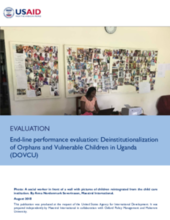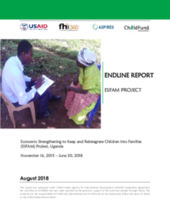Displaying 591 - 600 of 983
This study aimed to review and analyze the pathways from care to education and employment, using meta-analysis.
Using a bevy of administrative data, this article investigates potential risk and protective factors of youth (n = 1420) who aged out of foster care without legal permanency in a southwestern state.
The aim of this review was to gather, assess and synthesize the current empirical evidence of transition to adult life from the perspective of young people leaving foster care.
This study describes the feasibility, acceptability, and initial efficacy of iHeLP, a computer- and mobile phone-based intervention based in Motivational Interviewing for reducing substance use among youth exiting foster care.
This video presents an exchange of lessons and experiences between youth and adult representatives of Nebraska Children and Families Foundation in the United States and Doncel Asociación Civil in Argentina, highlighting authentic youth engagement in addressing the needs of former foster youth.
This study assesses prevalence of substance use, and the impact of housing instability. and independence preparation on substance use in two samples: youth currently in-care and former foster youth.
This video from the Economist explores the history of institutionalization in Romania and the efforts now underway to transition to family-based care and small group homes for children.
The objective of this evaluation is to assess the performance of the “Deinstitutionalization of Orphans and Vulnerable Children Project in Uganda” (DOVCU) with regards to the creation of sustainable changes in the lives of two beneficiary groups, namely 43,000 vulnerable children living in targeted households and 2,000 children at risk as a result of an integrated package of support.
This final report describes the Economic Strengthening to Keep and Reintegrate Children into Families (ESFAM) project and presents findings from an evaluation of the program, including its implementation and outcomes as well as its impacts.
This qualitative study explored processes of resilience in the transition to adulthood for cross-systems youth aged 18 to 24.


